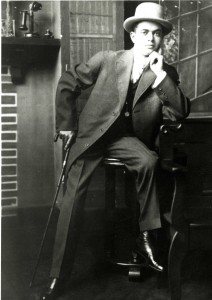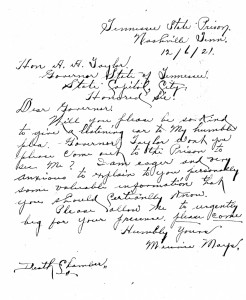Senior Karen Sieber has traveled over 7,500 miles (by car, that is) this summer to collect primary documents related to the Red Summer of 1919, an especially violent series of clashes between racial groups that resulted in “death and destruction and little accomplished.” For her honors thesis, Seiber is creating an interactive timeline and map made of primary documents related to the approximately thirty riots, which occurred anywhere from rural Georgia to Chicago to Bisbee, Arizona. Sieber believes it is one of the most violent periods in the nation’s history, yet unknown to most people. The lack of knowledge and research on the subject is due in part to a lack of access to original documents, an problem Sieber aims to solve.
Sieber was awarded a Summer Undergraduate Research Fellowship (SURF) from the Office of Undergraduate Research for Summer 2015 to acquire additional documents housed in over 20 collections across the US. Users will be able to compare letters, photographs, telegrams, court documents, newspaper articles, and even poetry, to look for trends and stories to emerge. She is also creating learning experiences for Grades 6-12.
She hopes that the tools will provide a more comprehensive history about the riots that includes topics like race, the threat of Bolshevism, lynch law, the role of prohibition, violence among soldiers and sensationalized journalism. “Visualizing documents in this way will allow for the history to tell itself far better than someone re-writing that history, “ Sieber says.

Seiber has uncovered and collected over 800 documents including this photograph of Maurice Mays, and a letter Mays wrote to the Governor of Tennessee asking him to visit him on death row.
Mays, a prominent African-American business owner in Knoxville, was pegged for the murder of a white woman named Bertie Lindsey. His arrest led to a lynch mob that destroyed the courthouse looking for him, leading to violent, deadly riots throughout the city. With little evidence against him and similar attacks on women continuing after his jailing, Mays wrote the Governor and other leaders in an attempt to clear his name. Mays was executed in the electric chair on March 15, 1922.

